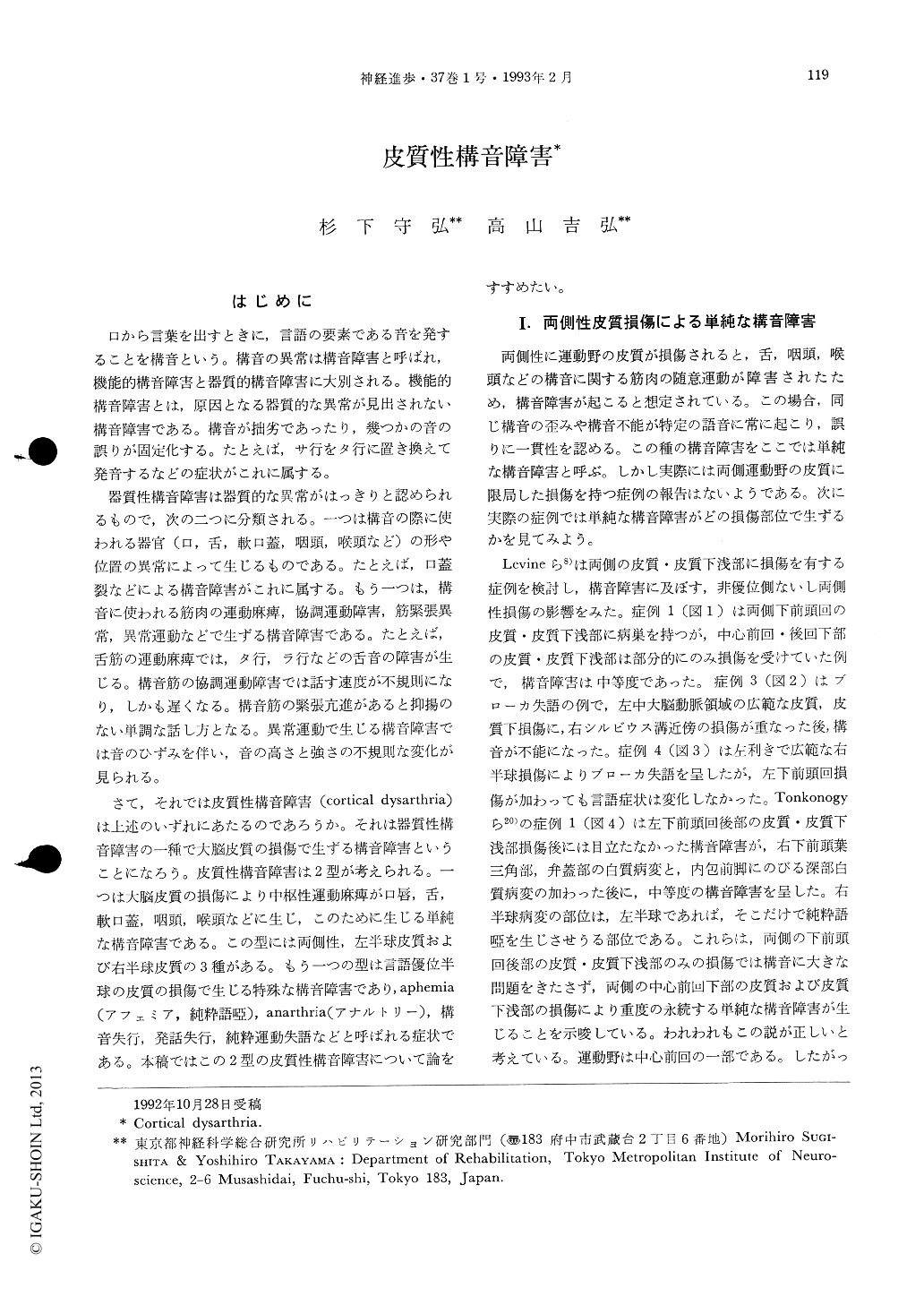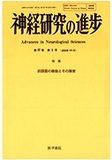Japanese
English
- 有料閲覧
- Abstract 文献概要
- 1ページ目 Look Inside
はじめに
口から言葉を出すときに,言語の要素である音を発することを構音という。構音の異常は構音障害と呼ばれ,機能的構音障害と器質的構音障害に大別される。機能的構音障害とは,原因となる器質的な異常が見出されない構音障害である。構音が拙劣であったり,幾つかの音の誤りが固定化する。たとえば,サ行をタ行に置き換えて発音するなどの症状がこれに属する。
器質性構音障害は器質的な異常がはっきりと認められるもので,次の二つに分類される。一つは構音の際に使われる器官(口,舌,軟口蓋,咽頭,喉頭など)の形や位置の異常によって生じるものである。たとえば,口蓋裂などによる構音障害がこれに属する。もう一つは,構音に使われる筋肉の運動麻痺,協調運動障害,筋緊張異常,異常運動などで生ずる構音障害である。たとえば,舌筋の運動麻痺では,タ行,ラ行などの舌音の障害が生じる。構音筋の協調運動障害では話す速度が不規則になり,しかも遅くなる。構音筋の緊張亢進があると抑揚のない単調な話し方となる。異常運動で生じる構音障害では音のひずみを伴い,音の高さと強さの不規則な変化が見られる。
We classify dysarthria into two forms; simple and special. The simple form of dysarthria shows consistent errors in articulation caused by motor paresis, while the special form of dysarthria shows intermittent or variable errors in articulation.
It is hypothesized that bilateral lesions in the lower motor cortex, which controls the oropharynx, larynx, and respiratory apparatus, interrupts movements of these muscle groups, resulting in simple form of dysarthria. It has not been firmly established, whether bilateral cortical lesions of the motor cortex alone produce the simple form of dysarthria.

Copyright © 1993, Igaku-Shoin Ltd. All rights reserved.


